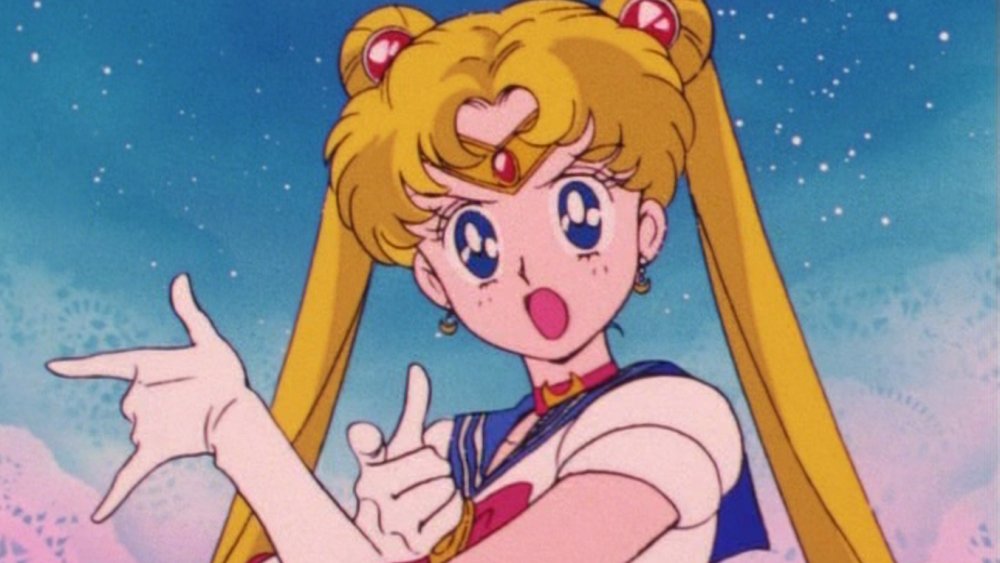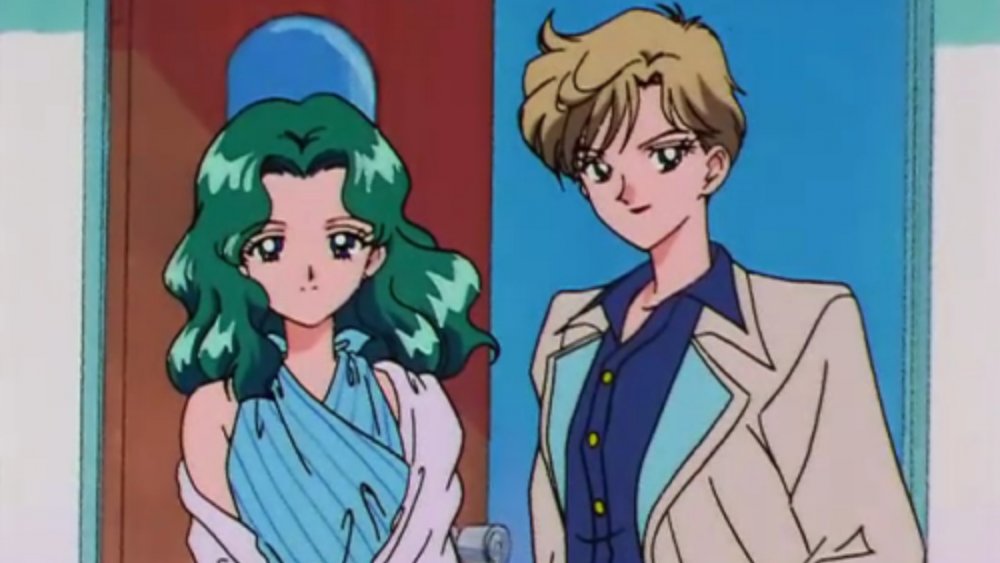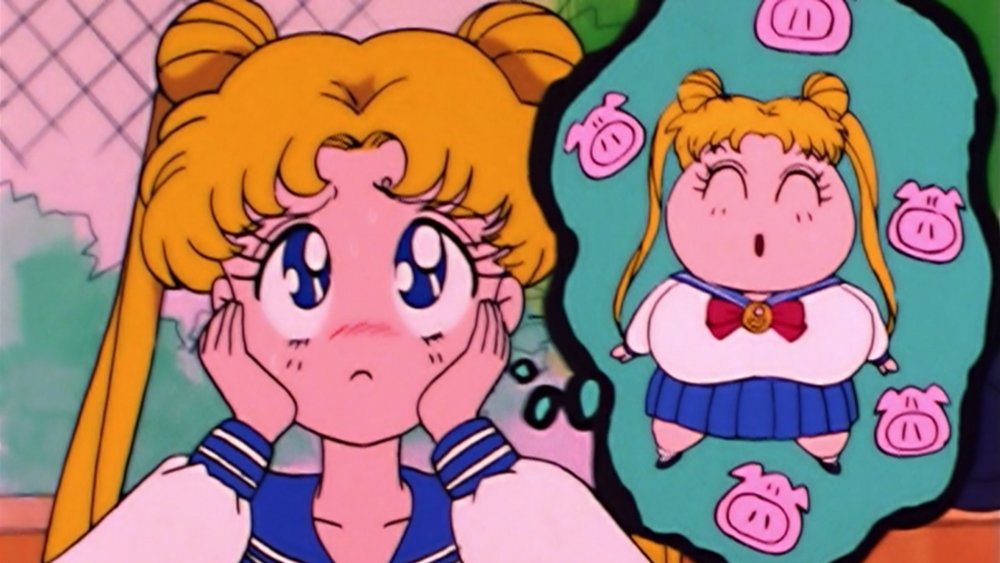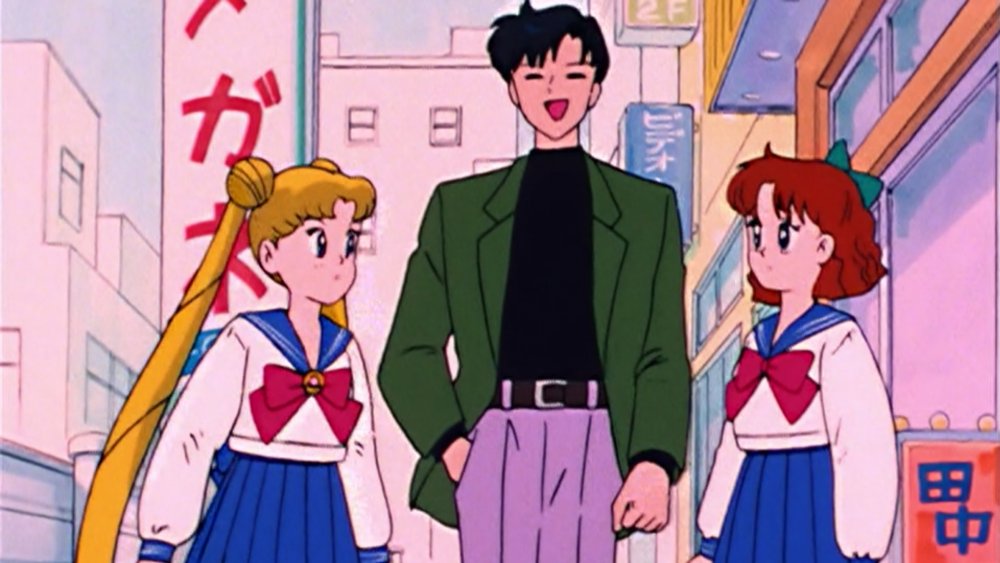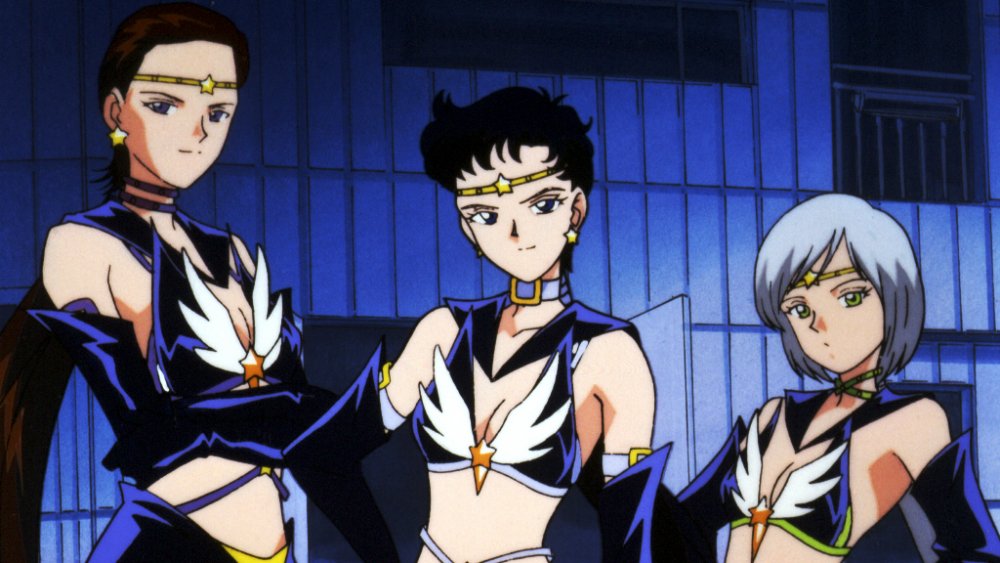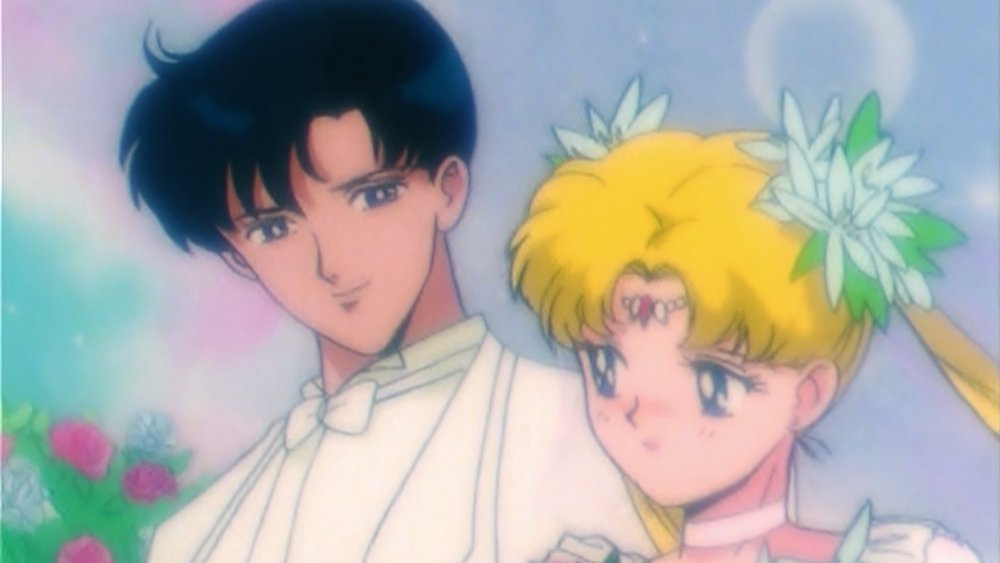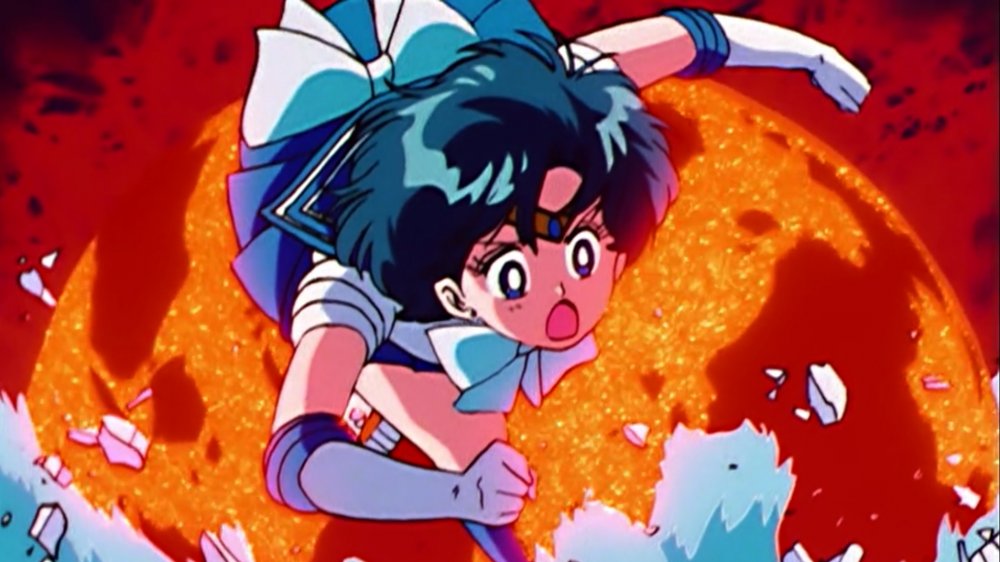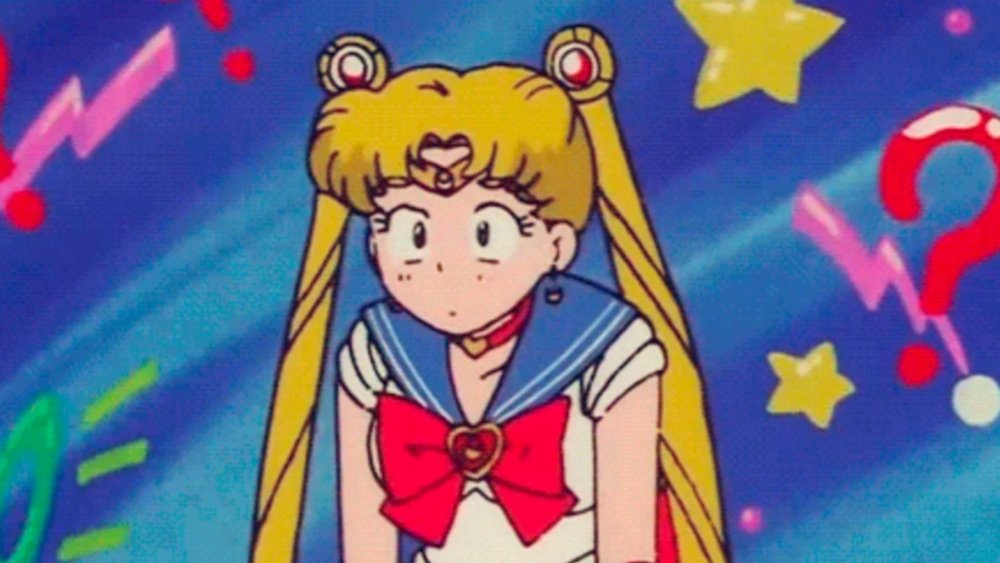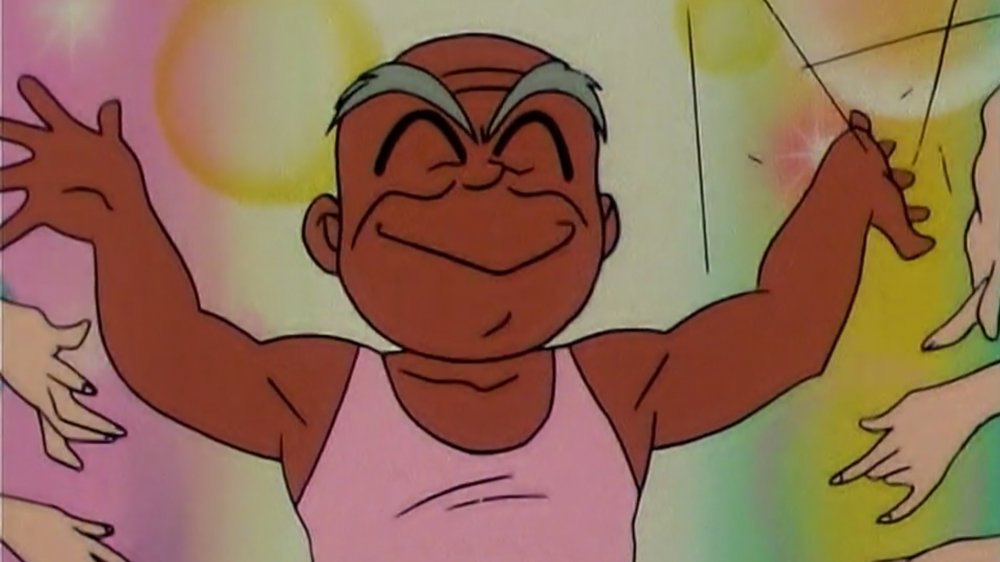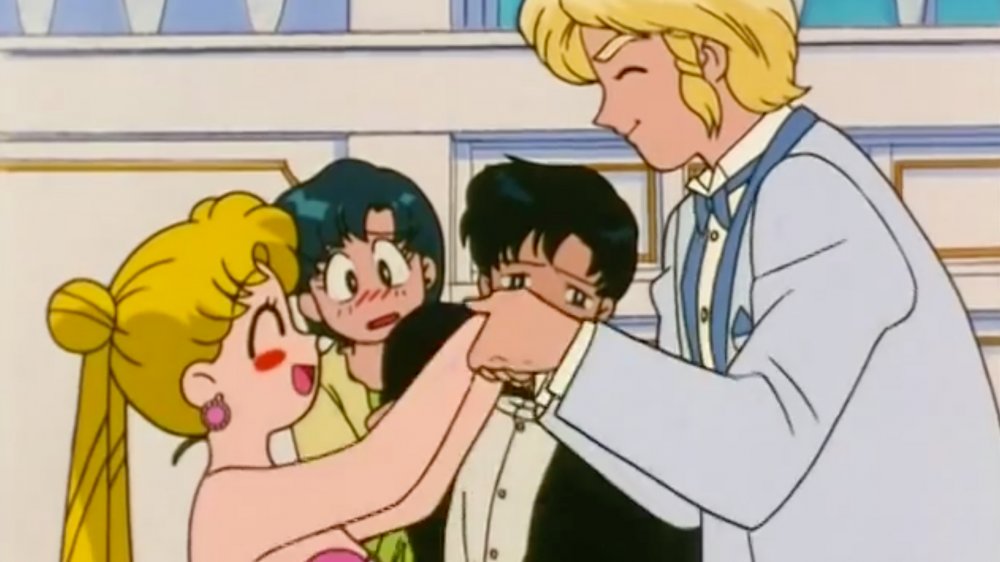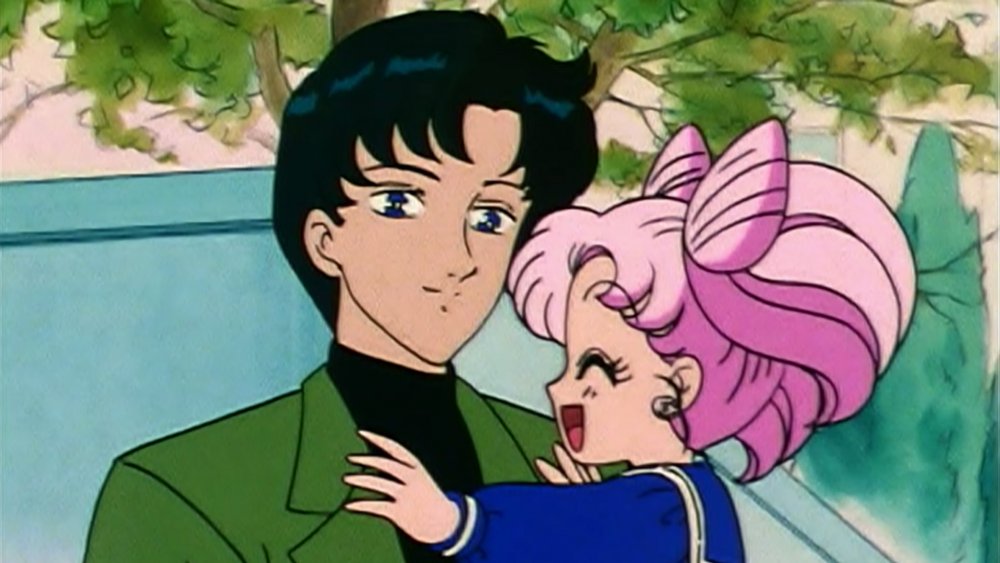Things Only Adults Notice In Sailor Moon
Whether fighting evil by moonlight or winning love by daylight, Sailor Moon is one of the most popular and influential anime series in the world. Featuring a cast of strong female protagonists, a surprising amount of positive LGBT+ representation for its time, and themes of empathy and friendship, the show left a lasting impression on audiences both in Japan and abroad.
Though Sailor Moon started as a manga, the brand has since exploded in popularity, receiving a live-action adaption, multiple musicals, and most recently, Sailor Moon Crystal, a streamable reimagining of the anime series that's closer to the original manga. With tons of iterations and merchandise, Sailor Moon has built an enduring fanbase all across the world, so much so that years after watching the original anime, many adults find themselves going back to the series.
Though initially made with children and teens in mind, there's a surprising amount of adult themes and content that are likely to go unnoticed by younger viewers, especially in the original English dub. Here are some examples of things that only adults will notice in Sailor Moon.
These Sailor Moon characters are lovers, not cousins
While there are multiple LGBT+ characters in Sailor Moon that were censored to avoid controversy, the most prominent example is the relationship between the two Outer Soldiers, Sailor Neptune and Sailor Uranus.
Michiru and Haruka, Sailor Neptune and Sailor Uranus respectively, make their formal appearance in Sailor Moon S, the series' third season. Michiru is portrayed as the most mature of the Sailor Soldiers and is a respected artist and violinist. Initially mistaken to be a boy by Usagi and her friends, Haruka is a talented race car driver and attends a school for geniuses in Tokyo. Both Michiru and Haruka are viewed as cool and sophisticated by the younger Sailor Soldiers.
Though the pair are lovers in the Japanese version of the show, Michiru and Haruka are introduced as cousins in the English dub. This makes things a bit awkward, considering many scenes show the two staring at each other adoringly or embracing suggestively.
Considering that Sailor Moon S released in America in the early 2000s, American censors were uncomfortable featuring a same-sex couple in an animated children's show. During the time, LGBT+ characters were few and far between and generally not as well-received by the public. However, it seems that by changing the lovers into cousins, the censors made Michiru and Haruka's actual relationship more confusing and relatively inappropriate considering they were each other's blood relations.
Usagi struggles with unhealthy beauty standards
Being a teenage girl, Usagi is very concerned with looks and how others perceive her. Usually, this isn't a problem and is par for the course for a growing girl. However, in the episode "Learn How to Be Skinny From Usagi," or "Slim City" in the English dub, Usagi struggles with unhealthy beauty standards.
The episode begins after Usagi weighs herself and finds she's slightly heavier than expected. For a show aimed at young girls, this episode in particular handles weight in a questionable manner. Instead of reassuring Usagi and encouraging healthy exercise or eating habits, Luna degrades and bullies Usagi. In one example, she even draws a picture of Usagi as extremely overweight, threatening that Usagi will end up like this in a matter of months.
Additionally, the episode does promote body positivity, but it does so by degrading girls who are overweight. When Usagi speaks with a classmate who's overweight and discussing how challenging weight loss can be, Usagi is visibly uncomfortable by her appearance. Additionally, Usagi's negative perception of herself isn't resolved through self-love or progress, but instead by a boy telling her that he likes thicker women.
Though Sailor Moon has plenty of empowering messages for young women, and Usagi is a generally kindhearted and empathetic character, this episode highlights the worst aspects of the show and is a bit more problematic than many probably remember.
Mamoru is a jerk to Usagi
The relationship between Sailor Moon and Tuxedo Mask is often revered as one of the most powerful of anime romances. For young children dreaming of love, Mamoru and Usagi's bickering and blossoming romance is endearing. Still, for older viewers, there are some concerning aspects to their relationship that are hard to go unnoticed.
When Mamoru first meets Usagi, the two have no memories of their past relationship together and are essentially strangers. Mamoru constantly harasses Usagi with insults, calling her stupid or unattractive. Most of the time, this is played off as charming banter.
Perhaps the most egregious example of Mamoru's lousy treatment of Usagi occurs during what fans refer to as "the breakup arc." During Sailor Moon R, Mamoru begins to have visions about Usagi dying because of their relationship. Instead of telling Usagi about this, he decides to break up with her, suddenly and in the coldest way possible. This poor treatment of Usagi continues for multiple episodes until the two just kind of randomly get back together. Mamoru never really apologizes and is forgiven without question. Additionally, we learn that the dreams were sent by Endymion, Mamoru's future self, to test his love for Usagi. So not only did Mamoru treat Usagi poorly for a string of episodes, his future self decided to randomly "test Mamoru's love" at Usagi's expense for no logical reason.
The Sailor Starlights transform into men
Sailor Moon consistently features characters that break traditional gender norms and are representative of the LGBT+ community. For example, take the Sailor Starlights, a trio introduced in the final season of the anime. In the manga, the Starlights are biological women who disguise themselves as men to blend in on Earth. The anime deviates from this by making the Starlights biological men in their human form and biological women when they transform. The change from manga to anime represents a significant shift in the series canon, as the Sailor Starlights are the only men in the series capable of having Sailor forms.
Considering that Haruka and Michiru's relationship was censored in America, it goes without saying that the Sailor Starlights also posed a problem for American censorship. However, the dub wouldn't have to make major changes as they did with Michiru and Haruka because the season wasn't released in America.
Mamoru is a college student dating a middle schooler
Mamoru is often framed as the perfect boyfriend. He's handsome, smart, and his alter ego, Tuxedo Mask, is always there when Sailor Moon needs him. Though he's a generally likable character, the age difference between Mamoru and Usagi is enough to raise a few eyebrows.
In the manga, Mamoru is introduced as being 16. For some reason, the anime ages him up to 18. Why is this a problem exactly? Because Usagi is only 14 when they first start dating. So for the majority of the show, Mamoru, a college student, is dating a middle school girl.
There's a pronounced maturity gap between Usagi and Mamoru, and it's just a bit uncomfortable that Mamoru is attracted to girls who are so young and still maturing. Because of Mamoru's general likability and the idea that the two are lovers from a past life who are destined to be together, this detail is easy to miss, especially for young children and teens who watch the show. However, when looking at Mamoru and Usagi's relationship as an adult, it seems more creepy than romantic.
The Sailor Scouts die brutal deaths
Sailor Moon is known for its campy humor and "villain of the week" plots. Still, the show becomes quite serious as it progresses. Most notably, Sailor Moon and the Sailor Scouts are killed and reincarnated multiple times throughout the show.
The series starts after Queen Beryl attacks the Moon Kingdom, resulting in the deaths of the Guardians. Sailor Moon and her friends are reincarnated on Earth without memories of their past lives. Once their powers are awakened, the girls are forced from their normal teenage lives and thrust into the role of protecting the Earth from evil.
Though heavily edited in the English dub, in the season finale, Sailor Mars, Mercury, Venus, and Jupiter are all brutally killed while protecting Sailor Moon. Considering that up until this point the show hadn't had such high stakes, it's surprising that the main characters would die one-by-one so suddenly. More alarming is the heartbreaking reaction of Sailor Moon as her friends are picked off. After facing Queen Beryl, Sailor Moon and Tuxedo Mask die as well.
Surprisingly, these aren't the only deaths in the series. Tuxedo Mask, Sailor Mars, Mercury, and Venus all die again in Sailor Stars. Sailor Saturn, Sailor Pluto, Sailor Neptune, and Sailor Uranus are also killed off in the show's final season, though everyone is reincarnated once more. For a series aimed at children, there's definitely a lot more doom and gloom than one would expect.
Japanese culture was removed in the American dub of Sailor Moon
When distributed in America, Sailor Moon went through many changes to help appeal to an American audience. Aside from censoring violence and nudity from the original Japanese version, multiple instances of Japanese culture were removed from the show as well.
Mamoru's pet name for Usagi is "dumpling Head," referring to odango, a Japanese dumpling. Because odango isn't as popular in America as it is in Japan, Usagi is instead referred to as "meatball head." Additionally, the cast's names are Americanized, so instead of Usagi, Sailor Moon becomes Serena, Ami becomes Amy, Mamoru becomes Darien, and so forth. Obviously, kids won't think anything about this, but as adults know this show is from Japan, the Americanized names will definitely stick out.
On top of that, signs featuring Japanese were edited to exclude Japanese characters. This often results in blank building signs or posters that seem somewhat unnatural and out of place. And there are other subtler examples of Americanization demonstrated in the English dub as well. For example, images featuring roads are flipped so that cars drive on the right side of the road instead of the left. Considering that modern anime dubs are mostly unedited from the source, it's definitely strange to go back and see the extensive censoring of Japanese culture in a Japanese show.
Rei's grandfather is creepy
Though many of his scenes are heavily edited the English dub, Rei's grandfather is actually a major pervert who's continually harassing young women. Sure, at first glance, Rei's grandfather appears to be a kind man who tends to the Hikawa Shrine. Pretty quickly, though, we learn that he constantly hits on young teenage girls, and Rei has to keep him under control and even punish him. In one specific example, he actually has the nerve to ask Ami to marry him.
Though Rei's grandfather is often loud and aggressive in his pursuit of girls, his character does have a fair share of calm and insightful moments. Sadly, it's difficult to take him seriously, knowing that just moments before he was trying to seduce a middle schooler. For the most part, the old man's inclination towards young girls is played off as him being a harmless goofball. However, the comedic tone fails to make his character any less creepy, especially for adults who truly understand how big of a perv this guy is.
There's underage drinking in Sailor Moon
Considering Usagi is only a 14-year-old girl, it's surprising that she finds herself drinking at a party not once but twice throughout the series. In the episode "Romance Under the Moon: Usagi's First Kiss," Usagi and her friends attend a party. Trying to calm her nerves, she grabs what she believes to be juice and chugs it down. Unfortunately for her, that juice was meant for adults only, and she finds herself just a bit drunk.
A similar scenario occurs in the episode "Usagi Dancing to the Waltz," or "Everything's Coming Up Rosey" in the English dub. In the episode, Usagi attends a party for international university students. Again, she mistakes an alcohol beverage for juice, apparently not having learned her lesson. The dub excuses Usagi's drinking by claiming she's suddenly become sick. While it may be evident to adults watching that "sick" is a code word for "drunk," it's likely that this flew over the heads of many children and went completely unnoticed.
Chibiusa has an Electra Complex
Chibiusa, the daughter of Usagi and Mamoru who visits from the future, is a boisterous, loud child. She often finds herself butting heads with Usagi, meaning the two bicker more often than not. Though Chibiusa is actually Usagi's daughter, their relationship mirrors that of a sibling rivalry. While this relationship is a bit weird, it's ultimately harmless, especially considering their awkward situation. By contrast, the relationship between Chibiusa and Mamoru is slightly more uncomfortable.
When Chibiusa first travels to the past, she has a massive crush on Mamoru, so much so that her affection for him is a point of contention between her and Usagi. The two consider each other rivals, which is odd for multiple reasons. Chibiusa clings to Mamoru, and she even refers to their expeditions as dates. In some instances, she also stays at his house, a fact that's especially strange given that they didn't initially know their familial relationship.
With all of this in mind, it seems that Chibiusa has a bit of an Electra complex. Though Chibiusa's crush on Mamoru is played for laughs and isn't considered serious, it's bizarre just how much she clamors for Mamoru's attention. And while kids might not get what's happening here, adults will definitely think there's something weird happening in the world of Sailor Moon.
